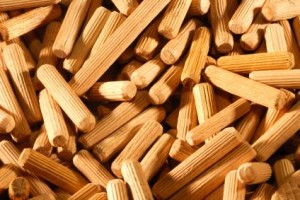Before There Were Nails – Cabinet Makers Dowel – Wooden Pins in Construction
 There haven’t always been iron and steel nails to use in construction. Long before nails and screws were widely available, most construction – whether it was furniture, ships or building construction – made use of wooden pins and pegs. Even now, construction using wooden pins, dowels and pegs is a hallmark of quality.
There haven’t always been iron and steel nails to use in construction. Long before nails and screws were widely available, most construction – whether it was furniture, ships or building construction – made use of wooden pins and pegs. Even now, construction using wooden pins, dowels and pegs is a hallmark of quality.
Wooden joins like those that use wooden pins are preferable to metal nails and screws in construction that will be exposed to the elements. The reason is a simple one – a rusted nail contributes to rotting wood, weakening the construction. A securely fastened join using wooden pins is stronger and lasts longer than most metal and wood construction.
There are a number of construction firms that specialize in timber frame construction of cabins and cottages, using all wood joins, including wooden peg and wooden pins as fasteners.
The idea of fastening wood together using wood may seem strange to anyone that’s not a woodworker or cabinet maker. After all, what else is a hammer and nails for? Or a screwdriver and drill and screws? Any fine furniture maker can tell you different, though. The use of mortise and tenon, dovetail and wooden pins joining methods are all common methods that go back far into history – and are still used NOT for historical accuracy, but because they are simply the better way to hold wood together.
Wooden pins are made from dowels, generally a hardwood. They’re often pre-shaped with a rounded or tapered tip to make insertion easier. They may be smooth or grooved to hold glue better, and they are available in many different lengths. The finished quality of your furniture can’t help but be affected by the quality of the wooden pins used in its construction.
You can purchase wooden cabinet makers dowels for all your projects from Dowel Australia, in sizes from 8-15mm and with either a smooth or fluted finish.